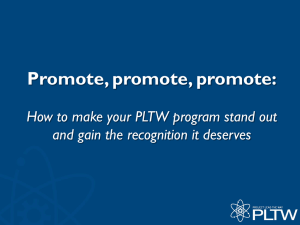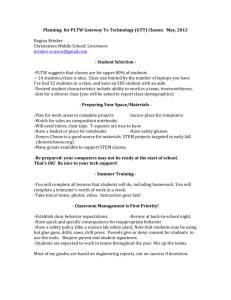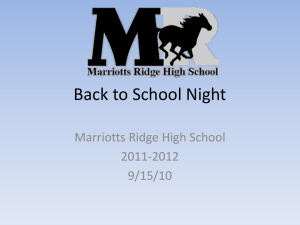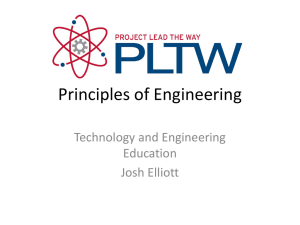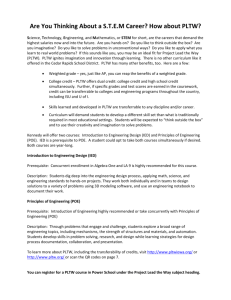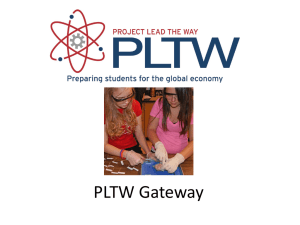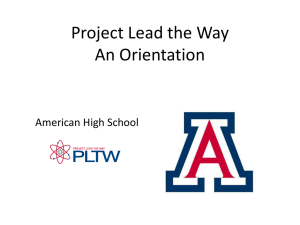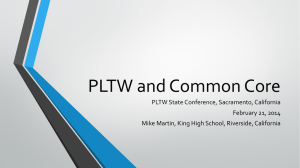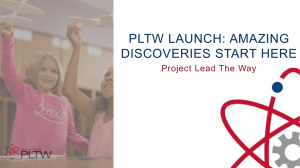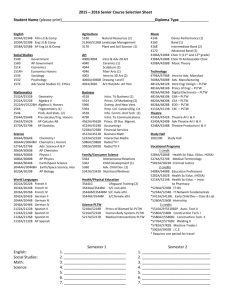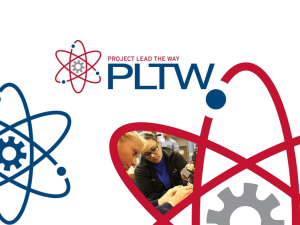4 th Grade - Project Lead the Way
advertisement
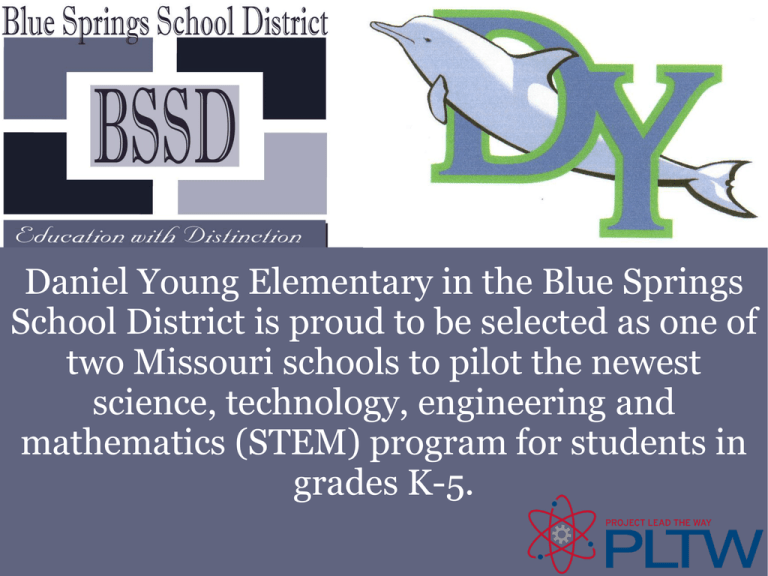
Daniel Young Elementary in the Blue Springs School District is proud to be selected as one of two Missouri schools to pilot the newest science, technology, engineering and mathematics (STEM) program for students in grades K-5. The elementary STEM program is designed and developed by Project Lead The Way (PLTW), the nation’s leading provider of STEM education curricular programs for middle and high school students. By offering this new elementary STEM program to its students, Daniel Young is expanding its high-quality educational offerings for its students. Studies show that students decide as early as second and third grade whether they like, and think they are good at, math and science. PLTW’s elementary program is designed for students in kindergarten through fifth grade and will align with standards such as Common Core State Standards and Next Generation Science Standards. Through a series of topic-based modules, students will engage in design problems that encourage collaboration, analysis, problem solving and computational thinking. The pilot program will test 12 STEM modules and play an integral role in the development of the final version of the curriculum by providing feedback on the experiences to PLTW. PLTW Launch Module Descriptions Kindergarten •Structure and FunctionStudents will discover the design process and how engineers influence their lives. In small groups, students will design, build, and test a paintbrush out of available materials to withstand a force. Then, the students will use the design process to sketch, build, test, and reflect on an improved paintbrush design. •Pushes and PullsStudents will investigate forces by exploring the effects of different pushes and pulls on the motion of an object, including forces of differing strengths and directions. The students will refine a design to address a design challenge and reflect on the effect of modifying the strength or direction of a force. PLTW Launch Module Descriptions 1st Grade •Light and SoundStudents will investigate light and sound waves, including vibration from sound waves and the effect of different materials on the path of a beam of light. The students will use the design process to sketch, build, test, and reflect on a device that uses light or sound to communicate over a distance. •Light: Observing the Earth, Sun, Moon, and StarsStudents will collect observational data about the sun, moon, and stars and describe patterns in their data. Students will build upon their knowledge of light waves from the previous module to design, build, test, and reflect on a device that enhances observation of the earth, sun, moon or stars. PLTW Launch Module Descriptions 2nd Grade •Properties of MatterStudents will investigate and classify different kinds of materials by their observable properties. After testing materials and analyzing the data, the students will determine the best material to solve a design problem. •Form and FunctionStudents will research the variety of ways animals disperse seeds and pollinate plants. Using this data students will design, build, and test a device that mimics one of the ways animals either disperse seeds or pollinate plants. Students will reflect on the efficiency of their design and how it was informed by nature. PLTW Launch Module Descriptions 3rd Grade •Science of FlightStudents will be introduced to how aircraft vehicles fly while investigating the effects of balanced and unbalanced forces on the motion of an object. Students will develop an understanding of how engineers work and will be introduced to aspects of the aerospace engineering field. Students will also learn sketching techniques, discover computer-aided design, and use basic descriptive geometry as a component of design and measurement and to model their solutions. Using an engineering notebook and other forms of documentation, students will document the process by which they design models and solve problems. •Forces and Interactions Students will explore simple machines including wheel and axles, levers, inclined planes, and more as they continue investigating the effects of balanced and unbalanced forces on the motion of an object. Additionally, students will explore magnetic and electric interactions between two objects not in contact with each other through a series of hands-on-projects. Finally, the students will apply their knowledge of mechanisms and magnetic interactions as part of a solution to a design problem. PLTW Launch Module Descriptions 4th Grade •Energy CollisionsStudents will explore mechanisms such as gears, simple machines, and pulleys. As the students apply this knowledge to mechanical design, they will explain relating to the speed and energy of an object. As a culminating project, students will investigate the transfer of energy resulting from the collision of two objects. •Energy ConversionUtilizing mobile robotics and building on their prior experience in the Collisions module, students will design, model, test, and refine a device that converts electrical energy to mechanical energy. The students will explore engineering careers that involve energy conversion and mechanical design. PLTW Launch Module Descriptions 5th Grade •Robotics and AutomationStudents will explore ways that robots are used in today’s world and the impact of their use on society and the environment. Students will learn about a variety of components as they build and test mobile robots that may be controlled remotely. •Robotics and Automation: Challenge Students will review mechanisms and explore mechanical design and computer programming. They will apply their knowledge of mechanisms, robotics, and programming to compete in a design challenge by designing, building, testing, and refining a mobile robot that meets a set of design constraints. PLTW Launch in Action Questions? cgibler@bssd.net
